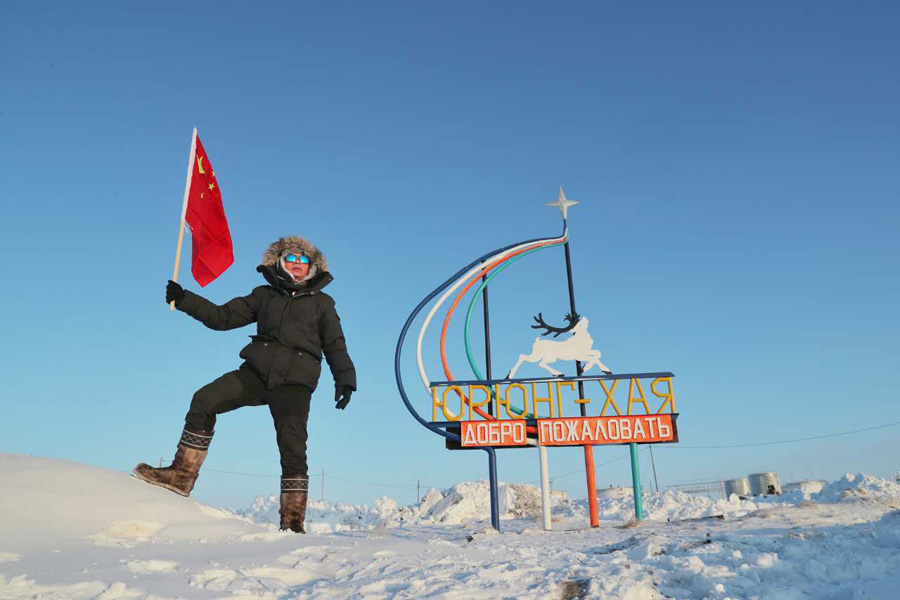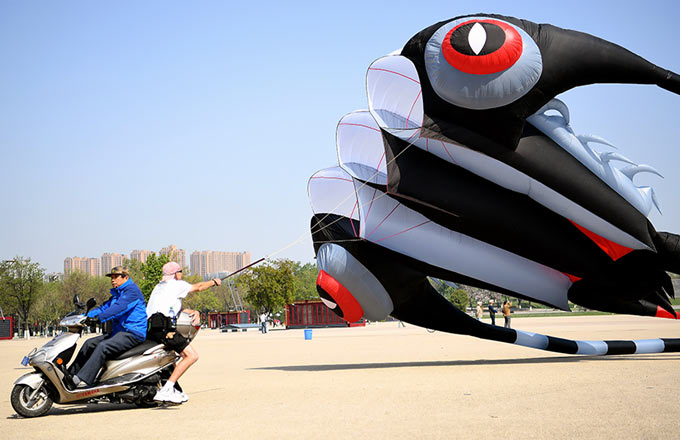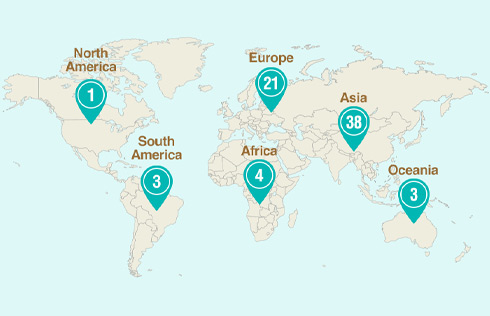Chinese explorer's incredible arctic journey
 |
|
Wu Yu holds the Chinese flag aloft after reaching Yuryung-khaya, the most northerly village inside the Arctic Circle.[Photo/chinadaily.com.cn] |
Crossing from Mongolia's forever-flat plains can be tiresome recalls Wu, the dead-straight roads stretching onwards to the horizon.
"To keep our spirits up and often time to keep us awake, we listen to local radio stations, and sometimes if the music isn't to our taste, we brought along plenty of Chinese music as well."
The days and miles ticked by, as the temperature began to fall the further north they travelled, finally reaching the Russian border. This time, all documents checked out, and Wu sailed into a land of ice and snow.
This is where the journey became difficult. Lake Baikal – the world largest, oldest and deepest freshwater lake dominates the landscape in southern Siberia.
Formed from a rift in an ancient valley, the immense body contains 20 percent of the world's unfrozen fresh water and sinks as deep as 1,642 m.
Choosing to avoid the lake, Wu instead decided to stick the road and cross the mountain ranges in Ulan Ude.
This proved impossible. Three meters of heavy snow had made the roads impassable, even for Wu's heavily modified vehicle equipped with four-wheel-drive and snow tires. On Feb 4, Wu was forced to turn back.
"There was no way to get through," Wu says. "So we had to return to the city and enquire about another way."
After speaking to local officials and guides in the city of Ulan Ude, there turned out to be one other way north that wouldn't lose them so much time as waiting for the snow to clear -- the lake.
For almost five months a year much of Lake Baikal's surface is frozen with many parts navigable by car. With the help of a local guide, Wu was escorted across the frozen blue lake.
The majestic scenery in a world of white whirled by and as the mercury got lower and lower, so did the kilometers until Wu crossed into the Arctic Circle and made it to the Arctic Ocean.
Finally on Feb 21, struggling for traction in the thick snow, Wu made it to Yuryung –Khaya, the northernmost village on the edge of the Arctic Ocean – the temperature outside: minus 55 C.
Mission accomplished. After 33 days, 8,000 kilometers and endless hours driving Wu Yu had become the first person to drive from the South China Sea to the Arctic Ocean.
The villagers expressed their great surprise at seeing Wu's white and red Toyota Landcruiser roll into town, where the main mode of transport is dog sleds.
With the help of a local English teacher, Wu sat down with Mayor Kanat Uskenbaevich over a plate of dried raw fish, a staple food of the village, who asked about customs and life in China and what was next for the explorer.
"In the next few years, I think I will be making quite a few more trips like this one," Wu says. "And of course, I will be looking at further and even more challenging journeys."
After the meeting, Wu headed to coast where he poured a small bottle of water he had carried 8,000 kilometers from the South China Sea, into the Arctic Ocean. He then refilled the bottle with Arctic seawater.
"To me it felt like a friendly swap," Wu says. "A symbol of healthy exchanges, communication, integration, and harmony between China and Russia."













